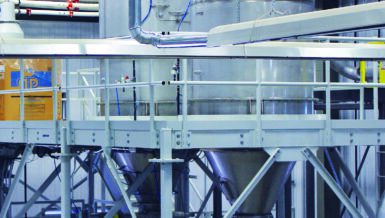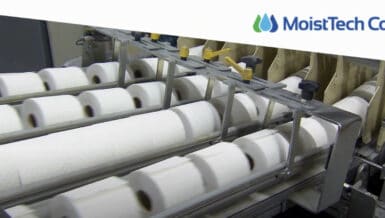The benefits of reducing this waste are obvious, reducing the cost of food whilst also increasing the supply. Incorrect levels of moisture can be a major problem for the food industry. Failure to control moisture can result in the food becoming spoilt, being unsalable or inedible. This article discusses various types of food waste and introduces how moisture control can be beneficial, both in the reduction of waste, and in the subsequent processing of the waste.
What is Food Waste?
It is important to clearly define the meaning of food waste as it is a term that is open to interpretation. There are many causes of food waste, which can be split into three distinct types, occurring at various stages within the food supply chain.
Manufacturing Waste
Manufacturing waste is waste created during the production processes. This may be excess product, for example trimmings, or by-product waste such as fat or bones.
Most of these forms of waste may be reduced by better control of the moisture content throughout the process. Moisture levels in ingredients at various stages of production can affect the taste, the ability to process efficiently, machine operating temperature and machine wear.
Industrial Waste
Industrial waste is generated by the manufacturing process: it can be thought of as the “leftovers” after processing. A waste element is common to most food manufacturing processes: for example, when sugar is extracted from sugar beet, a pulp remains. A similar residue results from the production of rapeseed and other oils.
Precise real-time measurement and control of moisture during various stages of the food manufacturing process aid waste reduction, help to re-process and re-purpose industrial waste efficiently.
Consumer Chain Waste
Consumer Chain waste occurs at the final stage of the food supply chain, at the suppliers, retailers and in the kitchens of final consumers.
This category encompasses out-of-date food, unsold or unsalable products, spoiled products and products damaged by incorrect handling or storage. This may be generated by a supermarket or food retailer with examples such as coffee grinds or residual food and oils.
Moisture Control: A Key to Waste Reduction
Correct control of the moisture can reduce technical problems such as blockages, reduce machine wear and the likelihood of breakdowns as well as reduce energy consumption and increase yield. Correct final moisture levels also determine a product’s shelf-life.
Moisture control in animal feed
In the production of animal feed, incorrect levels of moisture in the input mash cause problems in the pellet mill, resulting in dusty, crumbling pellets or soft, misshapen, sticky pellets with variable nutritional value. This results in the feed produced being unpalatable for the animal, going mouldy while being stored or simply having a reduced shelf life.
Controlling moisture is, therefore, a key part of feed production. Failure to ensure the correct levels will not only result in disappointed customers and poor business performance but also in higher levels of waste, machine wear and manufacturing problems.
Moisture control in rice production
The correct control of the drying process of rice has significant benefits, from ensuring a high-quality product (as over-dried rice has a bitter in taste), a reduction in energy from over-drying, and most notably reducing the volume of broken grains.
During the drying process, rice might circulate through a drier up to twelve times. A Hydronix sensor monitors the moisture of the rice as it is dried. For optimum results the rice is not dried at a constant rate, instead, the drying process temperatures are continually adjusted to achieve optimum product quality and energy efficiency.
Correct adjustments of the drier ensure that the rice is dried quickly, but not too fast. This improves the final quality and ensures the rice is at the perfect moisture content for de-husking. Too wet rice and the kernels may be damaged, too dry, and the rice breaks and cannot be sold as a premium product.
One example is a Hydronix customer that processes rice in West Bengal, India.
After deploying moisture sensors, broken rice was reduced from 3% to just 0.5%. By cutting broken rice to one-sixth of the previous amount, the customer eliminated 4,000kg/week of waste, equivalent to US$1,668.00. As the plant operates for 48 weeks of the year, this results in a total annual saving of US$80,064.00 due to proper moisture control.
This is many times the initial cost of installation and is virtually maintenance-free.
Choosing the best sensor for the job
The benefit of real-time moisture measurement as opposed to offline laboratory tests is that it allows a process to be adjusted without any time delay. Additionally, the use of multiple sensors at different points enables more advanced process control. The use of multiple sensors allows end-to-end process optimisation.
Hydronix offers a range of Digital Microwave Sensors which use a unique measurement technology which is linear at the point of measurement. Hydronix has been continually developing microwave sensors for over 40 years, operates globally and has excellent service and support capability.










































